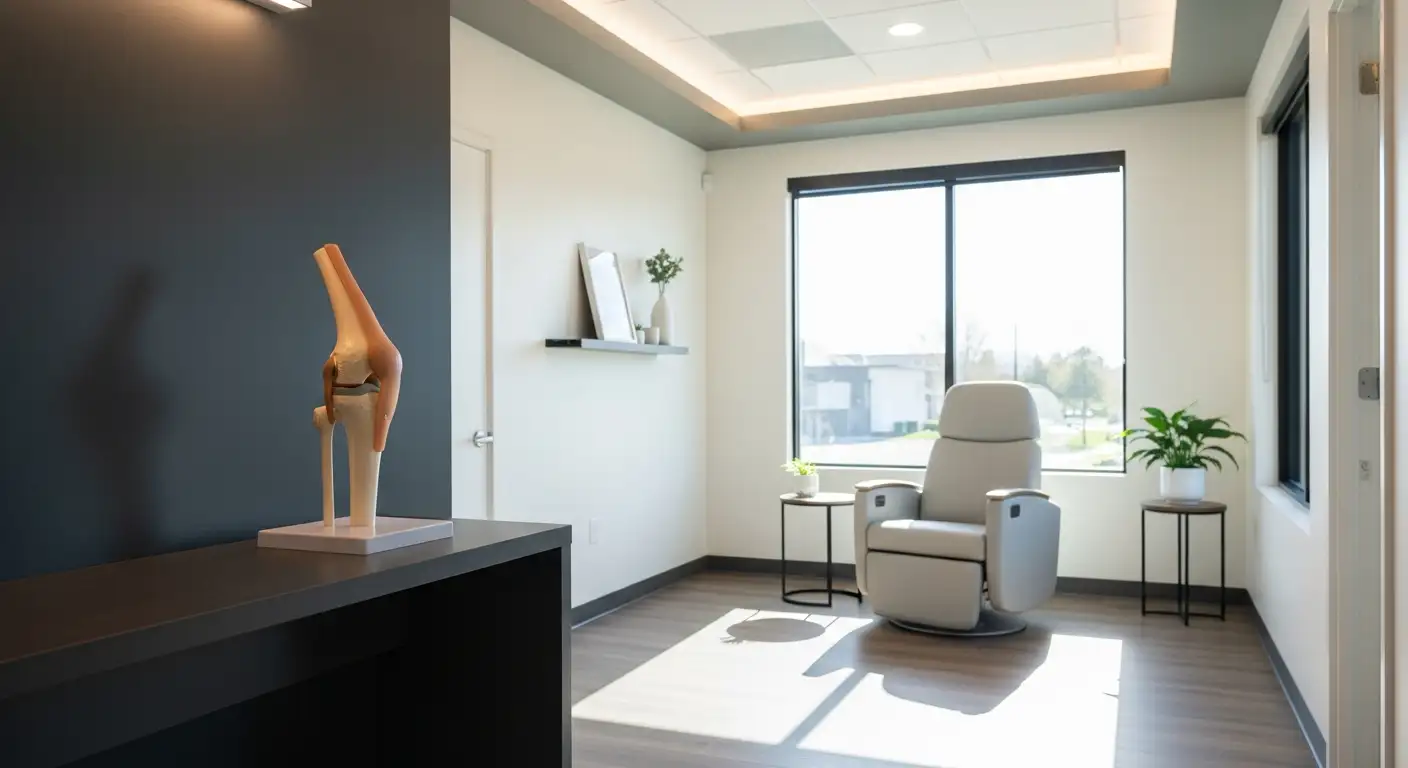Understanding Arthroscopic Knee Surgery
Arthroscopic knee surgery is a common procedure that aids in diagnosing and treating many knee conditions. It is a minimally invasive technique involving small incisions through which an arthroscope (a thin tube with a camera and light) is inserted, allowing the surgeon to view the inside of the knee on a screen and perform necessary treatments. This article provides an overview of arthroscopic knee surgery and outlines some common knee conditions it can treat.
Overview of Arthroscopic Knee Surgery
Arthroscopic knee surgery is a versatile procedure used for both diagnosis and treatment. It is less invasive than traditional knee surgery, leading to typically faster recovery times. Most patients can resume normal activities within a few days to a week post-surgery, depending on their individual case.
However, it's important to understand that the recovery timeline for arthroscopic knee surgery can vary widely. It is highly dependent on individual factors such as the extent of the knee damage, age, overall health, and adherence to post-operative care instructions. Factors like strength, flexibility, and the presence of arthritis can also influence the recovery process.

Most individuals who undergo arthroscopic knee surgery can expect to resume normal activities, including low-impact exercises, within a few weeks to months post-surgery. Full recovery typically takes 4 to 6 weeks, but patients can often resume light work within just a few days.
Common Knee Conditions Treated
Arthroscopic knee surgery can treat a variety of knee conditions, including but not limited to:
- Torn anterior or posterior cruciate ligaments
- Torn meniscus (the cartilage between the bones in the knee)
- Patella (kneecap) that's out of position
- Swollen synovium (the lining in the joint)
- Damaged articular cartilage
- Loose fragments of bone or cartilage
- Certain types of knee joint infection
For example, the total recovery time for an ACL reconstruction with meniscus repair is estimated to be 12-16 weeks. This duration can vary among individuals. Patients may be instructed to use crutches for an extended period, and the knee might remain swollen for a couple of months after surgery [4].
In conclusion, the arthroscopic knee surgery recovery timeline and the conditions it can treat are varied. Understanding these aspects can help individuals prepare for the procedure and recovery process, ultimately leading to better outcomes.
Recovery Timeline Post-Surgery
Understanding the arthroscopic knee surgery recovery timeline helps set clear expectations, enabling patients to plan their post-surgery activities accordingly.
Immediate Post-Surgery Period
The immediate period following arthroscopic knee surgery usually involves resting the knee. Depending on the individual case, some patients can return to normal activities within a few days to a week post-surgery. In particular, individuals who work desk jobs may be able to return to their regular routine within a few days [5]. However, those involved in physical labor may require a few weeks to a few months before returning to work.
Weeks 1-2 Recovery
In the first two weeks post-surgery, physical therapy and exercises usually begin to regain strength and mobility in the knee. This period is critical for restoring function and preventing stiffness in the knee joint. It's important to follow the prescribed exercise regimen for optimal recovery [2].
Weeks 3-6 Recovery
From the third week onwards, the patient typically continues with physical therapy exercises. The recovery timeline for arthroscopic knee surgery is usually faster compared to traditional knee surgery, allowing patients to resume normal activities quicker [2].
Beyond 6 Weeks
While full recovery typically takes 4 to 6 weeks, the recovery period can extend beyond six weeks for more severe knee conditions. It is crucial to continue with physical therapy exercises during this time and follow the surgeon's instructions to ensure a successful recovery.
The arthroscopic knee surgery recovery timeline varies from person to person, influenced by factors such as the specific nature of the knee injury, the individual's overall health, and their response to treatment. It's essential to remember that each person's recovery journey is unique, and patience is key to a successful recovery.

Pain Management After Surgery
Pain management is a crucial part of the arthroscopic knee surgery recovery timeline. It's important for patients to understand how to manage their pain effectively in the early recovery stage and in the long term.
Managing Pain in Early Recovery
After knee arthroscopy, a study found that 23.1% of patients required additional analgesia, particularly in the recovery room and between 2 and 8 hours postoperatively [6]. The level of post-operative pain can be influenced by the type of surgery performed and the pain level experienced pre-operatively. For instance, diagnostic arthroscopy generally resulted in less post-operative pain compared to arthroscopic meniscectomy.
The post-arthroscopy pain was found to be higher during the first 2 hours, plateaued until the 8th hour, decreased until the 16th hour, and plateaued again up to the 24th hour after surgery.
Common side effects, like swelling and pain, begin to improve after a few days. They can be managed with rest, ice, compression, and elevation, also known as the RICE method.
Long-Term Pain Management
While the recovery timeline for arthroscopic knee surgery is faster than traditional knee surgery, patients should expect some level of discomfort during the healing process. Depending on the individual case, some patients can even return to normal activities within a few days to a week post-surgery.
Patients are typically advised to walk and perform light activities as soon as possible after surgery, gradually increasing physical activities based on their recovery progress.
Physical therapy is often recommended post-arthroscopic knee surgery to help patients regain strength and range of motion in the knee joint. The duration and intensity of physical therapy sessions may vary based on individual progress and recovery requirements.
Full recovery varies among individuals. Factors such as the extent of the knee injury, individual healing capacity, and adherence to post-operative instructions play a significant role in determining the recovery timeline.
In terms of returning to work, patients may be able to return to a desk job or normal routine within a few days after knee arthroscopy. However, individuals involved in physical labor may need a few weeks to a few months before returning to work [5].
Pain management is a critical aspect of the recovery process and patients should work closely with their healthcare providers to develop an effective pain management plan. This would contribute to a smoother and more comfortable recovery experience after arthroscopic knee surgery.
Rehabilitation and Physical Therapy
Physical therapy is a crucial part of the arthroscopic knee surgery recovery timeline. It aims to help patients regain strength and range of motion in the knee joint, restore flexibility, and improve overall function after arthroscopic knee surgery.
Early Stage Rehabilitation
In the initial stages of rehabilitation, the main goal is to reduce inflammation and restore joint mobility. Regular exercise, including approximately 20 to 30 minutes of exercise 2 or 3 times a day, is essential for restoring strength and mobility. This may include exercises like straight leg raises and buttock tucks that primarily focus on rebuilding strength without straining the knee joint [8].
Intermediate Stage Rehabilitation
As patients move past the initial recovery phase, the rehabilitation exercises become a bit more demanding. The focus here is on improving flexibility and stability. Exercises may include hamstring stretches and balance drills. It's critical to follow the therapist's instructions and not to push beyond comfort levels as doing so may risk re-injury or delay healing.
Advanced Stage Rehabilitation
Advanced stage rehabilitation is typically introduced a few weeks after surgery, once the patient has regained basic mobility and strength. At this stage, exercises may become more rigorous and may include adding weights to ankle exercises, such as straight leg raises. This gradual progression, from 1 pound to a maximum of 5 pounds over 4 weeks, can lead to improved strength and recovery [8].
It's important to remember that everyone's recovery timeline after arthroscopic knee surgery is different. Factors such as age, overall health, and the complexity of the surgery can all affect how quickly an individual progresses through these rehabilitation stages. Always work closely with healthcare professionals to ensure a safe and effective recovery.
Factors Affecting Recovery
While the general recovery timeline after arthroscopic knee surgery is typically a few weeks to several months, individual experiences can vary. Several factors can influence the recovery process and the time it takes to resume normal activities. Here we delve into three key elements that impact the recovery timeline: individual health and age, adherence to post-op instructions, and the type of knee injury or surgery.
Individual Health and Age
The health status and age of the individual undergoing arthroscopic knee surgery can significantly influence the recovery timeline. Factors such as the extent of knee damage, overall health, strength, flexibility, and the presence of conditions like arthritis can affect the recovery process.
For example, younger patients or those in good health may recover faster due to their body's innate healing capabilities. However, those with existing health issues or older adults may require a longer recovery period.
Adherence to Post-Op Instructions
Following the post-operative care instructions provided by the healthcare team is crucial for a successful recovery. This includes elements like pain management strategies, physical therapy regimens, and a gradual return to activities.
The success of the arthroscopic knee surgery recovery timeline often depends on adherence to these instructions and protocols. Regular exercise, including approximately 20 to 30 minutes of activity 2 or 3 times a day, can aid in restoring strength and mobility after surgery [8].
Type of Knee Injury/Surgery
The nature and severity of the knee injury or the specific type of arthroscopic surgery performed can also affect the recovery timeline. For instance, patients who have undergone minor procedures may be able to bear weight on their operated leg within a few days. In contrast, more extensive repairs might require several weeks before weight-bearing is possible [7].
Understanding these factors can help individuals undergoing arthroscopic knee surgery establish realistic expectations for their recovery process. It's always important to consult with healthcare professionals for personalized advice on managing recovery.
References
[2]: https://www.betterhealth.vic.gov.au/health/conditionsandtreatments/arthroscopy
[3]: https://ukhealthcare.uky.edu/orthopaedic-surgery-sports-medicine/treatment/knee-arthroscopy-post-operative-instructions
[4]: https://www.orthonorthcounty.com/blog/recovery-from-arthroscopic-knee-repair-surgery-20410.html
[5]: https://myhealth.alberta.ca/Health/aftercareinformation/pages/conditions.aspx?hwid=zc2421
[6]: https://www.ncbi.nlm.nih.gov/pmc/articles/PMC2687123/
[7]: https://www.bone-joint.com/initial-exercises-after-knee-arthroscopy/
[8]: https://orthoinfo.aaos.org/en/recovery/knee-arthroscopy-exercise-guide/





